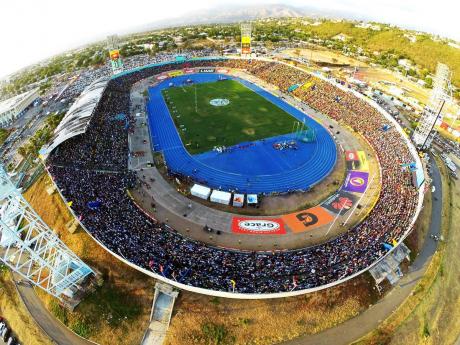Neil Richards | The National Stadium – a great inheritance
It is fitting that the venue where Jamaica’s Independence celebrations were held on August 6, 1962, is the beloved showcase of a sport widely recognised as the nation’s greatest international achievement.
There are good reasons for Jamaicans to be proud that the National Stadium is where high achievers of global athletics demonstrated much of their potential that would make them big contributors to national pride. The National Stadium is also a great gathering-place to hear renditions of world-renown music created in this land of wood and water.
A wonderful background story led to construction of the stadium.
Jamaica was on a fast track to regional athletics glory when the nation’s athletes demonstrated stellar performances at several Central American and Caribbean Games during the years 1938 – 1946.
Subsequently, at the 1948 Olympics in London, and also at the 1952 Olympics in Helsinki, Jamaica was recognised as a blossoming athletics powerhouse. Great performances by Herb McKenley, Arthur Wint, George Rhoden, and Leslie Laing strengthened the likelihood that a stadium would be built in Jamaica at an early date.
Nearly a decade after the athletics tour de force by Jamaicans in Helsinki, there was an audacious commitment by Jamaica to host the Ninth Central American and Caribbean Games – which was a spur that nudged progress towards construction of a stadium.
Sabina Park was not adequate to stage the Games. An 80-acre site at Tinson Pen had several advantages, but its location disqualified its selection. The preferred location was a south-eastern St Andrew site that was then named Briggs Park. It was part of the substantial Up Park Camp land designated for exclusive use by the army and owned by Great Britain before Jamaica’s political independence.
IDEAL FOR ATHLETICS
The Briggs Park location was assessed to be ideal for athletics and several other sports but not for games of cricket. In that regard, it is noteworthy that during the process of selecting a site for a stadium, three West Indies cricket ‘greats’ – Frank Worrell, Garfield Sobers, and George Headley – all visited the Briggs Park site and concluded that the nearby hills would impair the visibility of players attempting to catch a ball at high levels as was the case at Queens Park Oval in Trinidad.
Negotiations to purchase the Briggs Park site were concluded quickly by Premier Norman Manley. His legal expertise and his athletics achievements were good qualifications to jump-start the process of building a stadium. Manley’s athletics pedigree included five records that he set at the 1912 inter-secondary schools championships (CHAMPS), which was held at Sabina Park during his studentship at Jamaica College.
Sports Administrator Herbert McDonald (who later, was the recipient of a knighthood) was general manager and coordinator of the stadium project. He is credited with the decision to appoint noted visual artist Alvin Marriott to create sculpture that represents athlete Arthur Wint in athletic motion. That fine artwork is on display at the main entrance to the stadium.
Jamaican architect Wilson Chong designed the National Stadium and was the recipient of the 1963 Governor General’s Award for Excellence in Architecture for that project.
A consortium of contractors led by masterbuilder A.D. Scott, in collaboration with Leonard I. Chang and Caribbean Construction Company, erected the National Stadium.
RAISING OF JAMAICAN FLAG
Writer Olive Senior indicated that “the first public event in the stadium was the raising of the Jamaican flag. Major sporting events held there included the Ninth Central American and Caribbean Games in 1962, and the Eighth Commonwealth Games in 1966”.
After more than six decades of very active service, the aged stadium is slated for renewal, but a timeframe for that to happen is not clear. A critical objective is to achieve standards stipulated by World Athletics and FIFA – and the health and safety requirements of Jamaican regulators – so that the stadium can continue to host international events.
The cherished homeland stadium, which showcases what Jamaicans do best, is the administrative responsibility of Major Desmon Brown, general manager of Independence Park – formerly known as Briggs Park.
Among national priorities, renewal of the National Stadium should be assigned to a very fast track.
Neil Richards is an architect and town planner. Send feedback to columns@gleanerjm.com.


